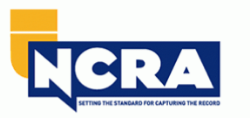Trial Presentation Expert Services for Legal Displays
Mesmerize the Court: Vital Aspects of a Powerful Test Presentation
Necessary aspects such as recognizing the audience, crafting a compelling story, and mastering verbal and non-verbal interaction are important components of an effective presentation. As these aspects intertwine, they create a natural strategy that not only informs yet also involves jurors on multiple degrees.

Comprehending Your Audience
Comprehending your audience is a pivotal facet of efficient test presentation. A successful presentation rests on the capacity to comprehend the demographics, worths, and tendencies of jurors. This understanding informs how arguments are framed, evidence is provided, and psychological appeals are crafted, making sure that the message reverberates with the jurors on a personal degree.
Research suggests that jurors originated from varied histories and may have differing levels of understanding concerning lawful procedures (trial presentation). Hence, it is vital to stay clear of legal lingo that can estrange or confuse them. Instead, utilizing clear, relatable language promotes interaction and comprehension. Additionally, understanding the jurors' potential prejudices and life experiences permits the trial presenter to anticipate arguments and address issues proactively.
Effective trial discussion additionally entails observing jurors' reactions throughout the process. Being attuned to non-verbal hints can give understanding into their interaction and understanding, permitting for real-time modifications in technique. Ultimately, an extensive understanding of the audience not only boosts interaction however likewise constructs relationship, increasing the chance of a favorable result. Involving with jurors as people instead than a cumulative unit is important in cultivating a solid connection in the courtroom.

Crafting a Compelling Narrative
Crafting an engaging story is essential in assisting jurors through the complexities of a case. A well-structured story not just streamlines intricate legal ideas but likewise involves jurors on an emotional level, making the details extra relatable and unforgettable.
This message should reverberate with the jurors' worths and experiences, cultivating a connection that goes beyond mere facts. This sequential approach can assist jurors adhere to the progression of events, highlighting reason and result.
Including human aspects-- such as individual stories or narratives-- can better improve the story's effect. These elements stimulate empathy, enabling jurors to imagine the consequences of the instance on realities. Furthermore, utilizing a regular style throughout the discussion enhances the primary argument, making it much easier for jurors to keep crucial points.
Ultimately, an engaging narrative changes a trial presentation from a plain recounting of facts right into a convincing story that captivates the jury, motivating them to mull over with both factor and emotion.
Using Visual Help
Integrating visual aids into a trial presentation can dramatically enhance jurors' understanding and retention of information. Visual materials such as graphes, layouts, photographs, and videos can transform complex legal ideas and proof right into conveniently digestible styles. By engaging several senses, these help permit jurors to imagine the situation's crucial elements, making it easier for them to comply with along and realize detailed details.
Moreover, well-designed aesthetic aids can highlight vital factors and highlight connections between various items of proof. For circumstances, timelines can properly show the sequence of occasions, while annotated pictures can make clear specific information relevant to the case. This not only help in understanding yet additionally reinforces the story presented by the attorney.
It is crucial, however, to ensure that aesthetic aids are relevant, clear, and skillfully provided. Extremely complex or cluttered visuals may overwhelm jurors and interfere with the message. When used sensibly, aesthetic aids offer to match the dental debates and improve the total impact of the trial presentation. Inevitably, reliable visual communication can be an effective device in persuading jurors and assisting them get to educated final thoughts.
Mastering Verbal Communication
Reliable spoken communication is crucial in a trial presentation, as it serves as the main ways through which attorneys communicate their debates and attach with jurors. Simpleness in language fosters understanding and helps jurors realize intricate problems presented read what he said throughout the test.
Additionally, tone and pacing dramatically impact how messages are gotten. A confident tone shares authority, while proper pacing allows jurors to soak up info without really feeling overwhelmed. Attorneys ought to likewise differ their singing inflections to emphasize bottom lines and maintain jurors' rate of interest throughout the discussion.
In weblink addition, the company of spoken disagreements is necessary. Structuring the narrative realistically and coherently assists jurors comply with the attorney's line of thinking, making it much easier for them to retain critical information. Using convincing methods, such as storytelling, can additionally enhance the psychological resonance of the disagreements presented, consequently creating an extra extensive connection with jurors.
Inevitably, grasping spoken communication not only enhances an attorney's case however additionally cultivates trust fund and relationship with the jury, considerably boosting the opportunities of a beneficial verdict.

Engaging With Body Language
Nonverbal interaction plays a crucial role in trial discussions, typically communicating messages that words alone can not share. Body language, including motions, position, facial expressions, and eye call, substantially influences just how jurors view the trustworthiness and genuineness of the speaker. A certain stance, with shoulders back and an open posture, can instill depend on, while closed-off body movement may recommend defensiveness or unpredictability.

Facial expressions need to show the emotions connected with the case, enhancing the story being presented. For example, a sincere expression during an emotional minute can evoke empathy and reinforce the psychological charm. Eventually, grasping body movement is vital for effective test presentations, as it improves verbal interaction and develops a compelling presence that resonates with the jury.
Conclusion
Finally, captivating the court demands a critical method that incorporates recognizing the target market, crafting an engaging story, using aesthetic aids, grasping verbal communication, and engaging via body movement. Each aspect plays a crucial function in producing a powerful trial presentation that reverberates with jurors on both emotional and intellectual levels (trial presentation). By integrating these parts effectively, legal specialists can considerably enhance their capacity to encourage and affect court decision-making